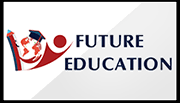Instructional Strategies and Learning Styles as Predictors of High School students’ Academic Performance in Physics Practicals in Kenya
DOI:
https://doi.org/10.17501/26307413.2019.2101Keywords:
Instructional practices, learning styles, performanceAbstract
The desire of every teacher and every educator is to improve academic performance in schools and colleges. Meaningful teaching and learning requires flexibility, creativity and responsibility in order to provide a conducive learning environment able to respond to the learner’s individual needs. A host of research has been conducted to investigate various factors that influence academic performance. Among such factors is the preferred learning styles of learners. A quasi – experimental pre-test post–test non-equivalent control group design was conducted to investigate how three learning styles (visual, auditory and kinaesthetic) and three teachers' instructional strategies (guided-inquiry, cooperative learning and direct instruction) predict academic performance (achievement test scores and acquisition of science process skills) in Physics practical work while controlling for gender. A sample of five hundred and nineteen (519) form three physics students were selected through multistage sampling procedures (purposive sampling, proportionate stratified random sampling and simple random sampling). Physics Achievement Tests 1 and 2 (PAT1 & PAT2), Learning Style Questionnaire and Physics Process Skills Checklist (PPSC).Teachers’ Instructional Guides on Guided-Inquiry (TIGITS), Cooperative(TIGCTS) and Direct Instructional Strategy(TIGDITS) were used to collect quantitative data.. Validity and reliability of the instruments were assessed. Data were analysed using multiple Linear Regression test. Results indicated that while Teachers’ Instructional Strategies contributed significantly to the model (B= 3.266, p<.05), Students’ learning Styles did not (B= .717, p=.412). These findings have implications to educators, teachers, learners, and ministry of education stakeholders. Recommendations are provided.
Downloads
References
Adunola, O. (2011), “The impact of teachers, teaching methods on the academic performance of primary school pupils in web ode local area of organization state,” Ego Booster Books, Ogun state, Nigeria. Alavi and Toozandehjani (2017)
Aljaberi, Nahil M. (2015). University Students’ Learning Styles and Their Ability to Solve Mathematical Problems. International Journal of Business and Social Science, Vol. 6, No. 4(1); April 2015. (Online), (http://ijbssnet.com/journals/Vol_6_No_4_1_April_2015/18.pdf.),
Ayeni, A.J (2011), “Teacher professional development and quality assurance in Nigeria Secondary School, “World Journal of education, 1(2): 143-149. Barman, Aziz and Yusoff (2014)
Bharadwaj, B. K. & Pal, S. 2011. Data Mining: A prediction for performance improvement using classification, International journal of computer Science and Information security (IJCSIS),9(4), 136-140.
Chang, W. (2002, April). The impact of constructivist teaching on students' perceptions of teaching and learning. Paper presented at the Annual Meeting of the National Association for Research in Science Teaching, New Orleans, LA.
Dalmolin A., Mackeivicz, G., Pochapski, M., Pilatti, G., & Santos, F. (2018). Learning styles preferences and e-learning experience of undergraduate dental students. Rev Odontol UNESP, 47(3), 175-182. https://doi.org/10.1590/1807-2577.05118
Fleming, N.D., Mills, C. (1992). Not Another Inventory, Rather a Catalyst for reflection to improve the academy. Professional and Organisational Development Network in Higher Education. pp. 137–55. Retrieved on July 14, 2014 from:
http://digitalcommons.unl.edu/cgi/viewcontent.cgi?article=1245&context=podimproveacad
Graf, S., Lin, T., and Kinshuk (2008). The relationship between learn-ing styles & cognitive traits— Getting additional information for im-proving student modeling. Computers in Human
Hightower, A.M. (2011). Improving Student learning by supporting quality teaching: Key issues, effective strategies, “Editorial projects in education. Ibrahim & Hussein (2016).
Jiraporncharoen, Angkurawaranon, Chockjamsai, Deesomchok and Euathrongchit (2015)
Kolb, A., & Kolb, D. (2009). The learning way: Meta-cognitive aspects of experiential learning. Simulation & Gaming, 40(3), 297- 327.
Mary, L.W.(2011). Students’ learning style preferences and teachers’ instructional strategies: correlations between matched styles and academic achievement. Unpublished Doctoral Dissertation, Liberty University, Lynchburg, VA
Njoku, Z .C., (2004). Fostering the application of Science education research findings in Nigeria classrooms: strategies and needs development. M.A.G Aka i.e. (ed) 45 Annual conference proceedings of Science teacher Association of Nigeria (PP217-222): Ibadan; Heinemann Educational Books Limited. Syler et al., 2006;
Nwagbo, C. (2001). The Relative Effectiveness of divided and Expository Methods on the Achievement in Biology of Students of Different Levels of Scientific Literacy. Journal of Science Teachers Association of Nigeria (JSTAN) pp. 271-291.
Tebabal, A. & Kahssay, G. (2011).“The effects of student centered approach in improving students’ graphical interpretation skills and conceptual understanding of kinematical motion”, Lat. A.M.J Phy.Edu, 5 (2) 374.
Teevan, C.J., Michael, L.I., Schlesselman, L.S. (2011). Index of Learning styles in a U.S. school of
pharmacy. Pharmacy Pract, 9(2), 82-87. http://dx.doi.org/10.4321/S1886- 36552011000200004
Thorton, B., Haskell, H., & Libby, L. (2006). A comparison of learning styles between gifted and non-gifted high school students. Individual Differences Research, 4, 106-110.
Tomlinson, C. (2001). How to differentiate instruction in mixedability classrooms (2nd ed.). Alexandria, VA: Association for Supervision and Curriculum Development.
Zualkernan, I., Allert, J., & Qadah, G. (2006). Learning styles of com-puter programming students: A Middle Eastern & American com-parison. IEEE Transactions on Education, 49, 443-450. http://dx.doi.org/10.1109/TE.2006.882366
Zeeb, M. S. (2004). Improving student success through matching learning and teaching styles. Retrieved from http://www.creativelearningcentre.com/downloads/lsia/ Zeeb% 20LSA%20research%20pilot%20edited%20US.pdf on 25/7/2012.
Zywno, M.S. (2002)., Instructional Technology, Learning Styles and Academic Achievement, Proceedings of 2002 ASEE Annual Conference and Exposition, Session 2422, Montreal, Quebec, Canada,
Downloads
Published
How to Cite
Issue
Section
License
Copyright (c) 2019 catherine Muhonja Aurah, Fanuel Mukhuyu Wesonga

This work is licensed under a Creative Commons Attribution 4.0 International License.






